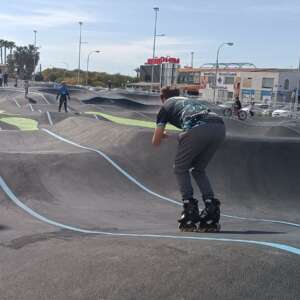
Most teenagers look forward to the day when they pass their driving test and are then able to take to the open road with mobility, but before obtaining that freedom, they first have to face the arduous task of learning to drive, and then passing the examinations.

Unlike other countries, Spain does not permit novice drivers to learn to drive with parents, or friends, all driving lessons for learners must be carried out through an approved driving school, and with approved instructors.
The method of training is often somewhat different to the UK, for example, with the instructor often taking a number of students out at once, with them sharing the driving time, whilst the rest learn through observation.
The test itself is no less daunting however, with long waiting lists due to a shortage of examiners, a recent proposal was to ask Guardia Civil traffic officers to conduct examinations in order to reduce the backlog. Although this has still not happened, the thought of a young learner having a traffic cop sat alongside them may not be the part they would look forward to most.
The test, or tests, as they comprise of theory and practical elements, have changed over time in Spain too, and they continue to evolve with changes which present themselves in this fast-growing modern, technology-driven world.
We have seen in a previous edition of N332 Roadwatch how experts believe that babies born today may never have to pass a test, as the technology is making self-driving vehicles a reality on the roads of the future. We have also seen how the driving test in the UK has changed, with less emphasis on learning manoeuvres, and more of a focus on so called “free driving”, including using the GPS. Spain, is set to embark on similar changes in the future too.
If you ask any adolescent you want to do at the age of 18, apart from many things your parents will not want to hear, they will tell you that they want to get a driver’s license. The perhaps most tedious part of the driving test, but certainly very necessary is the theoretical one, which we forget easily on the road but which is essential to maintain road safety .
In Spain, only a few years ago the system was simple, you found a driving school, obtained the books with all the necessary theoretical driving rules that you should learn, and either went to classes, or studied and practiced on your own. Once you had studied to a confident level, you sat an exam consisting of 40 questions, from which you were allowed to fail on 3. With the passage of time, the number of questions was reduced to 30 and with just 2 wrong answers allowed. The biggest problem that the concept of road safety met with was that the questions and options were considerably reduced, thus, many people managed to pass the test by simply learning these answers, without any understanding of the reasons behind them.
On the 21st of January, 2013 a new type of driving test was introduced, or rather its variation. It had a much broader database and the total number of questions were 15,500, which made it almost impossible to memorise. They were also preferably made available in computer format.
But the changes did not only arise in the theoretical part but also in the practical elements. From that moment on, before driving, the examiner would ask students to perform some basic mechanical checks, such as checking the fluid level, the correct tyre pressure, etc. Things we should all know.
In the current legislature, the DGT has proposed new changes for the driving test. One of them is to include videos in the theoretical exam that represent situations of risk in driving. In the videos, the student would be faced with having to choose such things as priorities, and thus theoretically, it will be possible to assess if that person is really prepared to go out on the road with a vehicle.
Many young people make the mistake that driving is easy and that it is their right to be allowed to do so. Just having an idea of how a vehicle moves, or even knowing the rules of the road, does not necessarily prepare you for the real-life situations that drivers face on a daily basis.
The paper-based test will be phased out, replaced by an entirely computer-based system, thus preventing cheating, which has arisen on numerous occasions, and ensures a better level of knowledge in order to understand the questions.
The practical test in Spain is also set to include more “free-driving” time, allowing the examiner to see how the student reacts to situations beyond what they may have practised by rote. Using the GPS safely is also set to be included, thus offering real driving scenarios to the driver, and adding the extra element of training and examination as to when it is safe to use devices in the car.
What do you think of these changes, would you include others? Send your comment to news@n332.es and we will publish some of your thoughts in the future.













